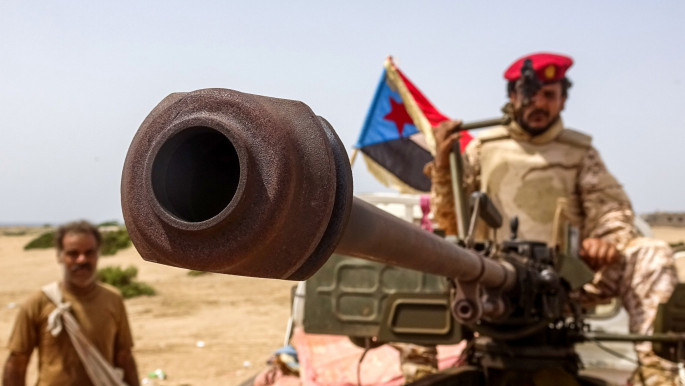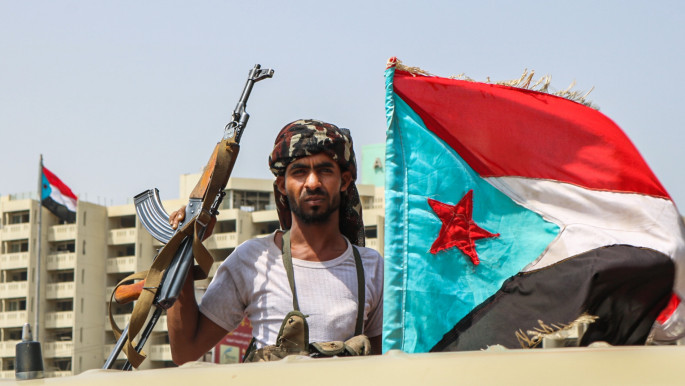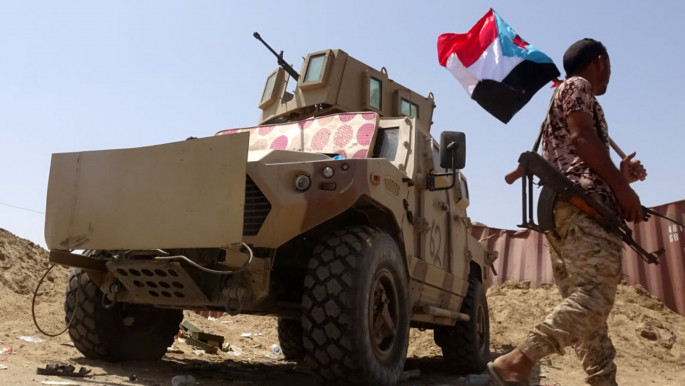The takeover of Socotra exposes Saudi Arabia's divide and rule strategy in Yemen
Around 1,000 Saudi soldiers are stationed on the island but did not confront the advance of the militants, Yemeni government sources said.
Fully armed and politically motivated, the secessionists seized all state institutions and military headquarters in Socotra. They also removed the flag of Yemen and hoisted the flag of what they say is South Yemen, the state which they aspire to establish.
This all happened in full view and knowledge of Saudi Arabia, which has been leading a ruinous five-year military campaign allegedly in support of the Yemeni government against the Iran-allied Houthis.
The governor of Socotra, Ramzi Mahrous, fled the island to Al-Mahra province after realising Riyadh had betrayed the Yemeni government.
In an interview with Al-Mahria TV channel, he accused Saudi Arabia of facilitating the separatist takeover of Socotra. "We received Saudi guarantees of de-escalation but it retreated from its guarantees and let the Southern Transitional Council (STC) seize Socotra," he said.
 |
Saudi Arabia has long turned a blind eye to chaos in the south of Yemen |  |
The STC was established by supporters of secession in the south in 2017 and has been receiving tremendous support from the UAE since then. In April this year, the Council declared self-rule in the south, further complicating Yemen's conflict.
The recent separatist takeover is indicative of Saudi approval for efforts which undermine unity in Yemen. The Kingdom has long been turning a blind eye to the chaos in the south. This attitude has undermined the UN-recognised government and has contributed to worsening the security situation in the Houthi-free south.
 |
|
| Yemen in Focus: Allies turn rivals on strategic Socotra island |
Abdulraqeeb Al-Hidiani, an Aden-based political analyst, says the Saudi-led coalition is no longer a fair mediator between the government and the separatists, pointing out that the coalition's present role is to enable the secessionist militias to take over the south.
"The coalition on the face of it acts as a defender of the government, but in fact it is an enemy of the government. The weakness of president Hadi and his government has shattered the hopes of seeing an end to the militias," Hidiani told The New Arab.
On 24 June, Saudi Arabia declared the start of a ceasefire in the southern Abyan province, which had seen deadly clashes since May as government forces attempt to drive the separatists out. Observers were deployed to supervise the ceasefire between the two sides. The intention of this move was to de-escalate and normalise the situation, and to implement the 2019 November Riyadh Agreement, according to the coalition.
But Al-Hidiani says the arrival of observers aimed to block the government from making any military gains. "It is like a veto of the government intention to recapture Aden. Saudi Arabia has betrayed the Yemeni government and it deals with this government as an adversary, not a partner or a counterpart," he said. The southern separatists took over Aden in August last year after a deadly confrontation with the government forces.
 |
Five years of war have proved that Saudi Arabia seeks to see Yemen divided into north and south |  |
Mokhtar Al-Rahbi, the advisor to the Yemeni minister of information, expressed distrust in the Saudi-led coalition's deployment of observers in Abyan. "Deploying the observers in Abyan and announcing the truce [aims to] allow the STC militias to be able to arrange their cards and take over a new province. Perhaps Hadramout and Al-Mahra are the [next] targets of the Arab coalition and the STC," he tweeted.
 |
|
| A house divided: The battle for Yemen's south |
Yemeni government officials are all too aware of the magnitude of the Saudi diversion from its core goal in Yemen, yet they are powerless out of fear. Only one official, Minister of Trade and Industry Mohmmed Al-Maitami, expressed his stance outspokenly and later resigned on 21 June, protesting the escalations by UAE-backed forces in Socotra.
 |
Saudi Arabia and the UAE have long stood against the unification of Yemen |  |
"Regional countries, some of which are within the Arab coalition that was established to restore the legitimate state, openly seek to rip Yemen to apart, turn against legitimacy and the state and work to tear Yemen and appropriate its lands and islands," Maitami stated.
Saudi Arabia has enabled a bleak picture to develop in Yemen, while tarnishing the Kingdom's reputation and eroding its credibility. At a time when Houthi rebels in northern Yemen intermittently fire missiles and drones at Saudi Arabia, Riyadh continues to undermine the UN-recognised government. Saudi Arabia already had enemies in the north, and it continues to create foes in the south.
 |
|
| The UAE is gradually eclipsing Saudi Arabia in Yemen |
Khalil Muthna Al-Omary, the editor-in-chief of Raialyemen news website, said Saudi Arabia uses the Yemeni government as a cover in order to do what it likes in Yemen.
"Five years of war have proved that Saudi Arabia seeks to see Yemen divided into north and south," he told The New Arab. "It does not have an interest in the mountainous territories in the north but it wants to control the coasts that have strategic locations and the deserts that are rich in oil."
Omary ruled out the possibility that Saudi Arabia and the UAE have conflicting agendas in Yemen. "He is wrong who thinks Saudis and Emiratis do not have common goals in Yemen. The two know well what they want and the latest developments in Socotra have proved that."
Yemen's south and north united in 1990, establishing what is known today as the Republic of Yemen. It was voluntary unification based on the consent of the leadership in both countries. But Omary says Yemen's 1990 unification was a disturbing development for Saudi Arabia.
"Reviewing the recent history of Yemen, we would find that Saudi Arabia and the UAE stood against the unification of Yemen. I believe Saudi Arabia sees its interests in keeping Yemen in this status: fragile, fragmented and poor, so that they can control it and fulfil their agendas."
The writer is a Yemeni journalist, reporting from Yemen, whose identity we are protecting for their security.





 Follow the Middle East's top stories in English at The New Arab on Google News
Follow the Middle East's top stories in English at The New Arab on Google News


